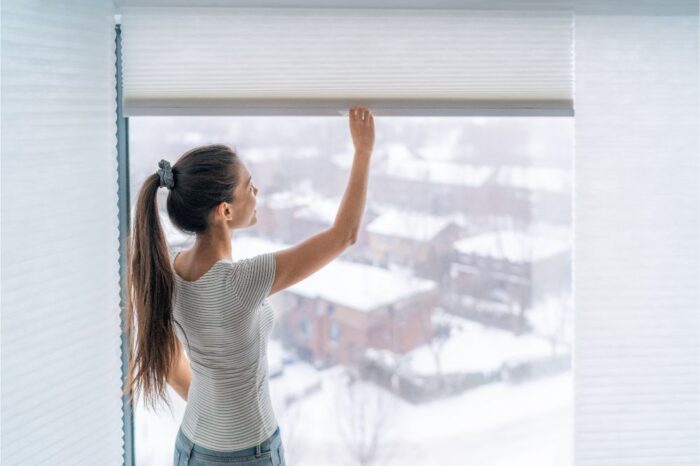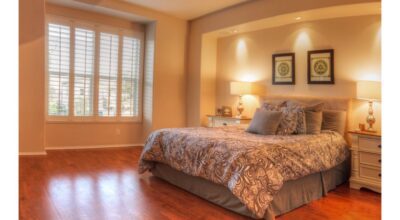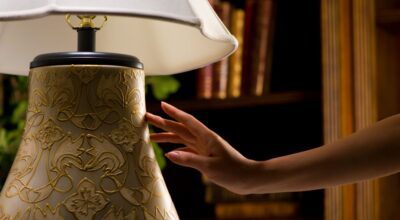If you are looking for alternatives to artificial light during the day in your building, light shelves might be a good option. These types of natural light reflectors give you more daylight and can also be a good way to improve the aesthetics of your building.
In this article, we will take a look at what they are and how to use them effectively to improve natural daylight. We will look at the benefits of light shelves compared to artificial light and what type of gain you may get with them.
If you want to know more about these energy-saving methods of providing more daylight, read on and find out how they work.
What is a Light Shelf Used For?
Light shelves are used to increase the lighting level by reflecting daylight deeper into a room than would have been possible with just windows. This is a great way to get proper lighting into any type of building where natural light may not be easy to get.
They can also be used to reflect the heat of the sun away from a building when installed on the outside. This means that you can also reduce the need for internal cooling systems, which will decrease the overall load on the structure.
Shade inside the building is also increased when the shelves are installed in the path of direct sunlight. This will also reduce the glare of natural sunlight that is caused by windows from the sun rays shining down on them.
You can easily replace the many different types of artificial lighting inside a building, such as fluorescent lights and LED strip lights. The use of bookshelf lighting can also be reduced in libraries where a lot of light is needed for reading.
How Do They Work?
These light shelves may be installed internally or externally and have a reflective surface to reflect sunlight towards the ceiling, or away from the building’s exterior. It is also important that the ceiling should be a light color to be an effective reflection of the natural light deeper into the building.
With the horizontal surface of the light shelf, the natural light is reflected to the interior of the office building or a library. So, the light level inside the building is increased without the use of artificial lighting, while saving energy usage for light in a building.
Light shelves need to be installed on walls with a lot of windows and the walls must face the sun for them to be effective.
What Are the Benefits of Light Shelves?
There are many benefits a building and its occupants can get from installing architectural light shelves.
- They will improve the natural light inside the building.
- They reduce energy consumption since you do not need to use artificial light.
- Exterior light shelves can help reduce solar gain inside a building.
- This feature will also help to reduce the load on a building by reducing the need for cooling systems.
- They increase the feel of comfort for people inside the building.
- People who are comfortable and have proper lighting will be more productive.
- You can enhance building design and architectural aesthetics.
- They may also reduce direct sunlight glare in a building.
- For better-improved design options, they can be used in storefront framing systems.
- Lighting shelves will also provide more diffused light inside a building.
- Shade from the sun is also provided depending on the position in which it is installed.
Drawbacks of Light Shelves
- They are not suitable to use in extreme heat or cold areas; they are best suited for mild heat areas.
- Exterior light shelves can cause interference with sprinkler systems.
- These shelves require high floor-to-ceiling height, so you may need a higher roof for the building.
- They may increase the difficulty of designing the windows system of a building.
- Maintenance on a building is increased when light shelves are installed.

Alternatives to Light Shelves
Other means of interior lighting and light control can be used if light shelves are not an option in your building.
Blinds
Blinds can help reduce solar gain in a building, making it be much cooler inside and reducing the need for cooling systems. The problem with blinds is that they cannot be used to direct the sunlight deeper into the building for more natural light.
This type of deflection can be used inside or outside the building, and comes in different designs to improve the aesthetics.
Louver System
A louver system can also be used on the inside and the outside of the building to control the amount of light. They need to be controlled by humans and reset on a regular basis for them to be effective for light and heat control.
You may use servo motors on external louver systems so they can be adjusted automatically during the day, but this may not be very reliable.
Final Thoughts
You can see that light shelves are a robust system for natural light and you will not need delicate accent lighting to increase the light. You can get rid of extensive artificial lighting systems in your home and save on energy usage in the long run.
This is also a system of natural light to consider when planning and designing a building for sustainable light sources.


